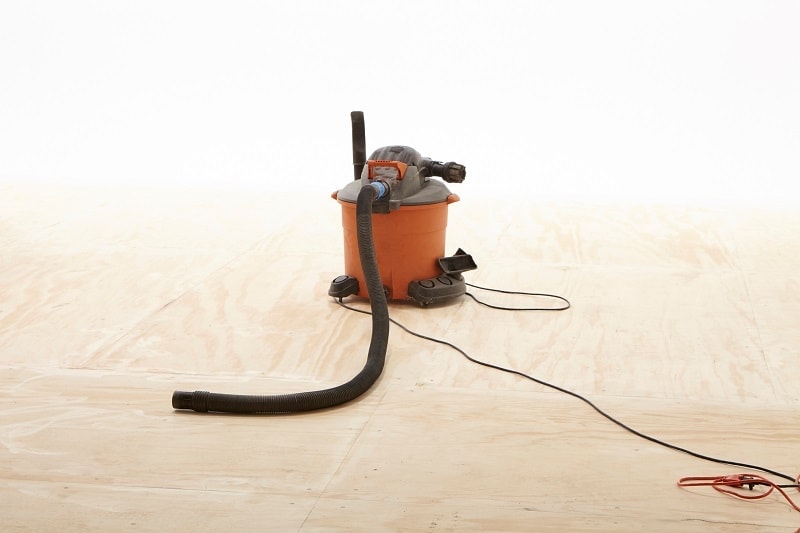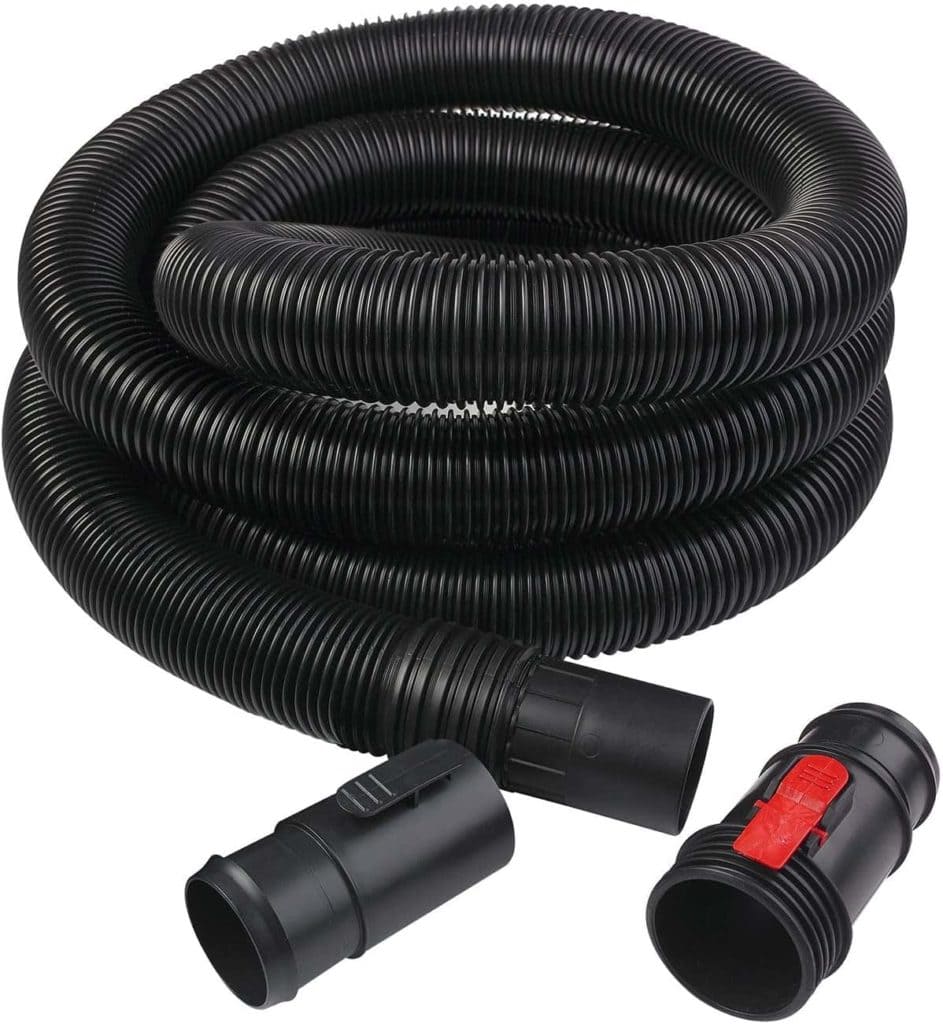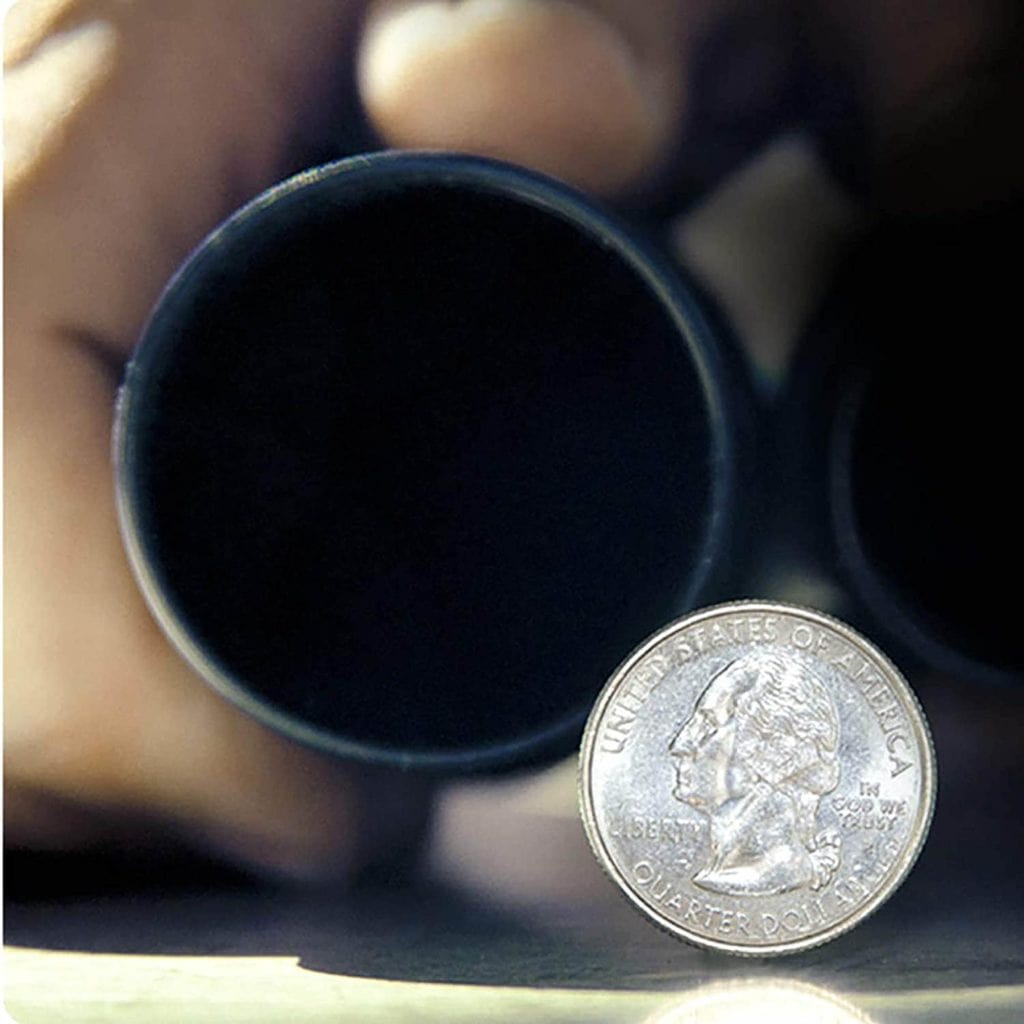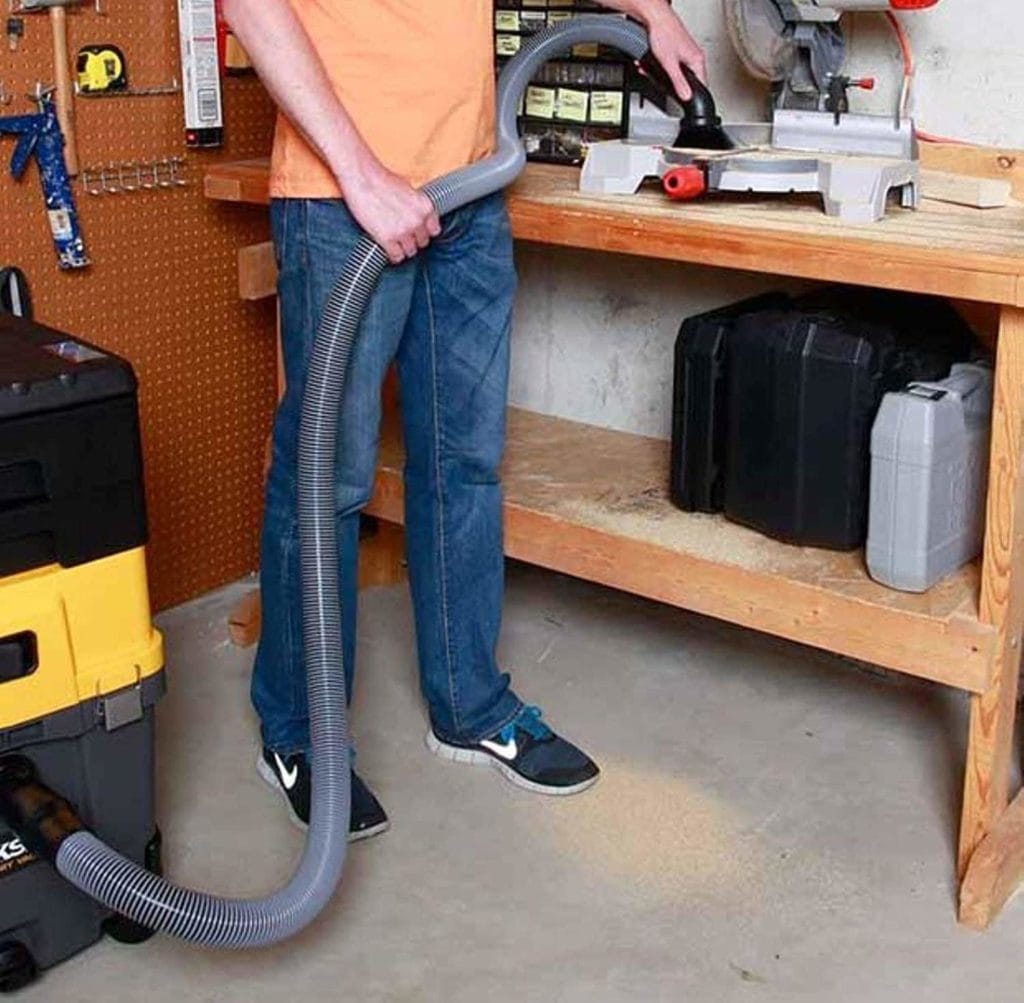Shop VAC Hose Size: A Beginner’s Guide
-
- Last updated:


While these hoses are interchangeable to a degree, there are going to be benefits and drawbacks to each diameter of vacuum hose. In fact, if your vacuum doesn’t seem to be performing up to par, the hose might even be to blame. Since Shop VAC hose sizing can be a bit of a complicated issue, we’re going to take a closer look at the most common sizes, their compatibility, and the effect they have on vacuum performance.

What Are the Most Common Shop VAC Hose Diameters

Part of the reason that Shop VAC hose sizing can be so confusing is that there are so many different diameters of Shop VAC hose available. There are three main widths of hose that you’re most likely to deal with: 2½-inch, 1⅞-inch, and 1¼-inch. Less commonly, you might also see a 1½-inch hose, though it will generally include adapters to allow it to fit on more common vacuum ports.
Metric vs Standard
If you look at many different brands that produce Shop vacuums, you’re likely to see some other odd sizes that don’t fit with the ones we’ve already covered. Brands such as Festool, for instance, use metric sizes for their hoses. Common sizes for these vacuums include 27mm, which is roughly equivalent to 1 inch, and 50mm, which is just shy of 2 inches.
Unfortunately, metric and standard hoses and machines are not very compatible. There aren’t commonly made adapters to switch between the sizes. In the US, most Shop VACs come with hoses that use imperial sizing to measure them. But if you get a vacuum that uses metric measurements, you’ll have to look for hoses that use metric measurements as well.
Is Bigger Better?
When it comes to vacuum hoses, many people think that attaching a bigger hose will allow you to vacuum larger messes and debris more easily. This is only partially true though. Larger items will fit into a vacuum hose with a wider diameter. But, a larger hose won’t create the same amount of suction as a smaller hose.

Let’s compare the difference between two of the most common sizes; 1-1/4-inch and 2-1/2-inch. In this case, the 2-1/2-inch hose is exactly twice the diameter of the smaller hose. But that means the cross-sectional area is actually four times larger, which results in a massive decrease in air velocity. Basically, the larger diameter hose is pulling a larger volume of air, but the pressure is much lower.
In the real world, this means that your vacuum won’t have the necessary suction to pick up those larger chunks. It might still be able to suck up sawdust and small debris, but asking it to pick up chunks of drywall or wood might be beyond its capabilities with the reduced suction it’s getting from the larger hose.

On the other hand, if we attach a small 1¼-inch hose to a vacuum with a 2½-inch outlet by way of an adapter, we’re going to see a huge increase in the velocity of the vacuum’s suction. Of course, the downside to this is that a smaller diameter hose can’t suck up the large debris you’ll often come across.
What About Length?
At this point, we’ve only discussed the diameter of the vacuum hose you’re using, but length also plays a pretty important role. With a longer hose, there’s a larger volume of available air space, which means the overall pressure goes down. The effect is pretty similar to using a larger diameter hose, though less pronounced. Extending your hose will only lose a little bit of suction compared to swapping it for a wider hose.
But you definitely don’t want to get a hose that’s too short. A short hose won’t lose any pressure, but it’s also not going to give you much reach. Unless you want to constantly wheel your vacuum around from spot to spot, a long hose will be a great benefit, allowing you to keep the vacuum still and just move the hose.
So, how long of a hose is too long? Many Shop VAC hoses are between 20 and 30 feet long, which is a great compromise of reach and pressure. If you start using hoses longer than 30 feet, the drop in pressure will be significant. At 20 feet in length, you’ll get good suction pressure with plenty of length to avoid repositioning your vacuum constantly. A 10-foot hose won’t give you as much reach, but it can be great in a workshop where suction is more important than reach.

When to Use Different Sized Hoses
While the hose that came attached to your Shop VAC is probably good for most of your basic cleaning needs, differences between different hoses make each size more suitable for specific types of work. You might be able to get away with using a medium-diameter hose for most jobs, but having the option to switch between all three will make it easier to suit your vacuum to different tasks.
Small Diameter Shop VAC Hose: 1¼-inch or 27mm
When you need lots of suction, the smaller diameter hose is the best choice. Examples of times to use a small hose include anytime you’re working with smaller power tools that make lots of dust. Jigsaws, sanders, circular saws, and any other small tool with a dust port that doesn’t create large chunks of debris will work best with a small diameter hose.
Medium Diameter Shop VAC Hose: 1½-inch to 1⅞-inch
Shop VAC hoses with a medium diameter are the best all-around sizes to do a majority of work. They’re perfect for general cleanup, as they have a good mix of powerful suction and enough diameter for larger chunks to slide through. They’re also great for working with tools that make larger chips, like routers.
Large Diameter Shop VAC Hose: 2½-inch or 50mm
When you need to suck up large debris, the wider diameter hoses are perfect. They can suck up large chunks of material, provided your vacuum can produce enough suction. They’re also the best bet for attaching to tools with large dust ports, including table saws, planers, and more.

Conclusion
Shop VACs are extremely versatile tools that are perfect for cleaning, attaching to tools, and more. They can make fast work of any mess or debris and even keep your working area clean when attached to tools. But if you attach the wrong sized hose to your Shop VAC, you’re likely to see performance suffer. So, follow the tips laid out in this guide to match your hose to the task at hand—so you can always get great performance from your Shop VAC.
Featured Image Credit: Kevin Tichenor, Shutterstock
Contents

